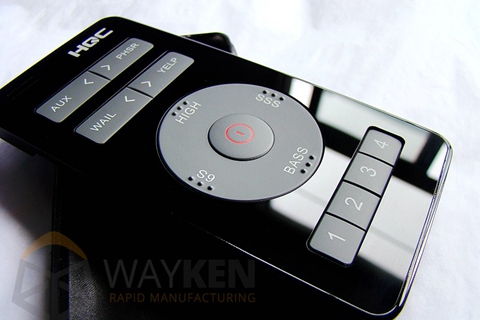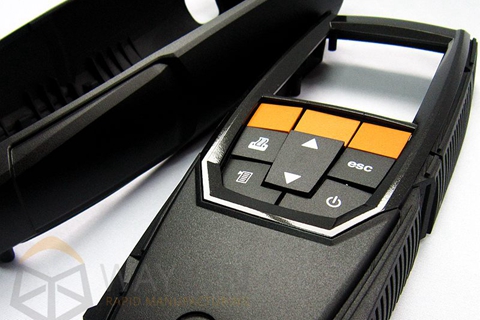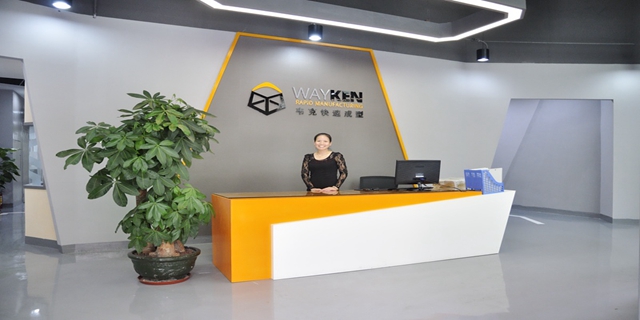
Before I started getting involved in the prototyping industry, I never thought it would be a high-demand industry, and the scope of the potential market it can serve is also very large. In my previous studies I never knew anything about the values of a prototype, and CNC machining of prototypes will play an important role in the beginning of mass production.
My impression of the prototype at the beginning
My first introduction to prototyping was my freshman year of college while completing a new refrigerator project for a Japanese client. In addition to the necessary molding of the main components, we also discussed the topic of prototypes. It was the first time I heard this word and I still remember the client calling it a “mock-up”. And we also evaluated the prototype plan for a long time.
After receiving the evaluated offer from the technical department, I was shocked to see the cost. Although I couldn't remember the exact number, it was definitely far from the unit price of our usual products. At this point, my definition of the prototype was still “too expensive”.
Another impression from the prototype was that I later contacted an Italian customer to design a custom phone case. The customer had a brilliant idea that users could also attach some small products to the back of the phone case which was made by my customer. As it was the client's first time being involved in a phone case project, we spent a lot of time building trust with each other in initial communication.
After basic design confirmation, the customer decided to start mold production. In the meantime, the customer sent us a prototype. The material and surface were relatively rough, so I thought it must be a 3D printed prototype. It could only be used to observe the general appearance. Considering the target market of this product, the customer planned to use silicone or TPU for production.
At that time, the factory recommended customers to use TPU material. On the one hand, the hardness of TPU can be higher. On the other hand, it will be used more in the market than silicone phone cases. However, the lack of experience with related products and material knowledge posed hidden risks for the latter problems. When the mold was finished, some pre-production black samples were sent for confirmation as per the customer's request. In addition to some relatively minor defects (the latter were essentially corrected by repairing the mold), other details were confirmed and we then began series production.
Unlike pre-production samples, there are multiple colors including black, white, blue, red and yellow. When production was completed, the effect was incredible. We took some photos to show the customer for confirmation. Then we deliver the goods. I expected the customer to sell these products in a short time. Finally, it also made great efforts in the initial phase of promoting new products.


Unexpectedly, the customer received the complaint one week after receiving the goods. The customer sold part of the product, but received a large number of end-user complaints. There is a very serious problem: except for the black product, the other four colors were discolored and dirty.
This happened just a few days after end customers used it. The surface of the phone case, especially these 4 colors, became darker and dirtier, but it could not be cleaned. The customer received many refunds and asked us for a solution. After speaking with the technical department, I learned that this was due to the properties of the TPU material.
Once exposed to light or air, TPU can easily change its normal color. Most TPU phone cases on the market are predominantly transparent once applied. Only after a month of use do they become yellow and dirty. The customer's design requires a solid, non-transparent color, but the factory has no similar experience and cannot predict the result.
This directly led to the failure of this product. The client's capital investment, advertising, time, money and energy were lost. His reputation was also affected. Every time I think about it, I feel sorry for the customer. Before the project really moved forward, it wasn't easy to establish clear communication, but mutual trust was real.
We even talked about our lives to encourage each other. My lack of experience did not help the client find other better solutions in advance. Although the factory also has some responsibility, I believe that personal experience is still very important.
Now remembering this subject, I think I would advise the client to make some prototypes for testing. Prototypes should be as similar as possible to mass-produced products. In many situations, for products whose appearance is important, it is also important to disregard some of their structures or functions.
We are often confused by illusions. We believe that what we always emphasize in communication is the most important, and then we go further and find new problems. I have encountered this situation more than once or twice.
Importance of the prototype
For me, the biggest purpose of a prototype is to avoid or reduce risks. This cannot be measured by price but by subsequent processes such as design improvement, material selection, mass production, etc. If the prototype is not checked and tested, losses will occur when a problem occurs. Sometimes the losses can even be huge. Many people who have never been exposed to or know nothing about the prototyping industry may initially have the same opinion as me.
Consider why a prototype or two is so much better than mass-produced products. If you have 100% confidence in your product design, I think it will not be a problem to directly produce a mold for mass production. Otherwise, I think it's better to make prototypes to confirm if there are deviations between the physical objects and your expectations so that the subsequent process runs much more smoothly.
Another feature of prototyping is the short time frame, which eliminates the need to spend a lot of time on pre-test design. Compared with the high cost of molds and the value of mass-produced products, the cost of prototypes is not a big problem.
When looking for a manufacturer to make a prototype, price should not be the main criteria. It is true that price is a key factor in all transactions, but due to the importance of the prototype, it is a top priority to consider the overall strength of suppliers. In my opinion, only three things are important: product, service and price.

When it comes to a product, a qualified supplier must have basic processing skills to ensure that the prototype can be manufactured according to the customer's needs. It must meet customers' requirements in terms of accuracy, appearance, function, etc. At the same time, he must have a deep and impressive knowledge of materials and technologies to be able to advise according to the client's needs.
When it comes to service, responses to customer queries must be quick, offers must be created in a short time and communication must be professional and efficient. These are all very important factors. A good service provider will not just answer a question, but can actually communicate with clients to determine their needs and demonstrate professional techniques. After receiving an order, a good supplier should update the production progress to avoid problems that can be identified and resolved immediately. After the sale, don't forget about the customer's project and actively ask for feedback. The last point concerns the price. I believe that there is no lowest price on the market, only the lowest price.
The same product at different prices, quality, delivery time, service, etc. What is the right price? The supplier is reliable, the service is good and the offer is within budget. I have contacted many customers and some have told me why they no longer want to work with their previous suppliers. Most reasons for this are supplier quality issues, unstable delivery times, or lack of problem-solving skills. Therefore, collaboration is not smooth. It is easy to find a cheaper supplier, but it is difficult to find a good and suitable supplier.


























































